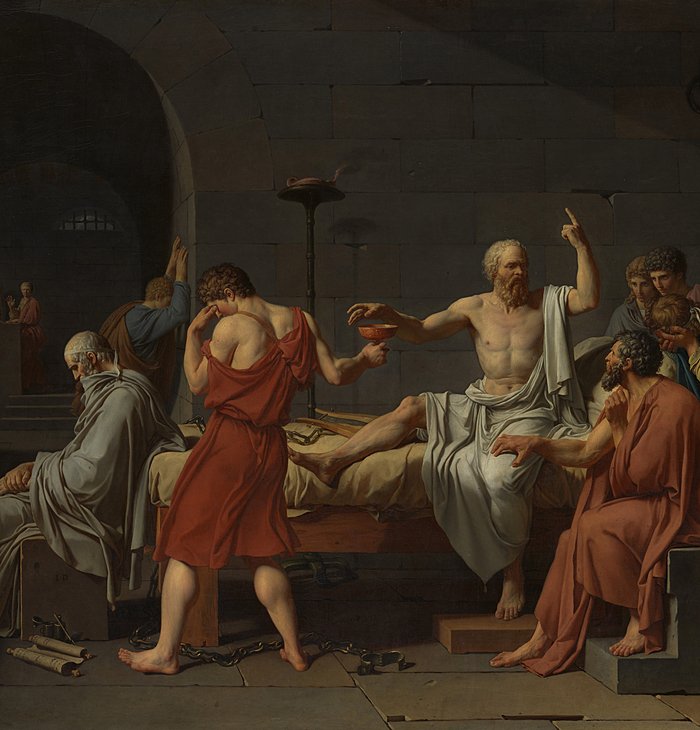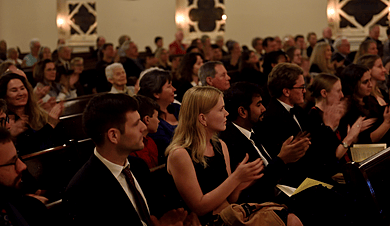

Why We Need More Rhetoric, Not Less, in an Age of Campus Violence
News 30th October 2025 Daniel Gallagher
Of the lessons to be drawn from the chilling assassination of Charlie Kirk on September 10th, one stands out with particular salience for educators: We need more rhetoric, not less. The problem is that “rhetoric” has become a dirty word. In the classical sense, it is anything but.
To be more specific, we need more education in the ars rhetorica—the art of rhetoric—if we are to have any hope of reducing political violence by cultivating an atmosphere conducive to vigorous and healthy debate within the public square.
It takes great courage to say that these days, but unless we acknowledge the task and take it seriously, college campuses, which used to be extraordinary places for meaningful dialogue and discussion, will continue to devolve into arenas of shouting matches or, as we have now seen, much worse.
A critical mass of professors, staff, and students—as well as a fairly decent free-speech policy—give me hope that things will improve at my former institution, Cornell University. But by the time I left there in 2023, alumna and commentator Ann Coulter, invited by student groups to speak on campus, was forced to end her talk after seven minutes of whoopie cushions, circus music, and pre-adolescent screaming from the audience.
Although my office door was always open, I would occasionally arrive to find that fliers publicizing events or courses someone presumably found offensive had been ripped from my bulletin board. Had they taken a few minutes to come in for a free cup of coffee and a conversation, perhaps I’d know why, but sadly, I never will.
At my new institution, Ralston College, I don’t have to wait until office hours for open conversations about important topics, some no less controversial than those either circumvented or squelched at Cornell. They take place naturally in the classroom and over meals that nourish the soul as well as the body.
Students at Ralston prefer to do the hard work of learning rhetoric rather than criticizing it or complaining about its absence. They are firmly committed to learning how to express themselves clearly with cogent arguments both orally and in writing, and to engage in civil debate by employing those skills. By the time a student reached their final year of study at my former institution, I could no longer presume they had mastered those skills or had even been introduced to them.
Back in the early eighties, when I was in middle school—public school, mind you—we were already honing those skills. Indeed, it was those skills that motivated the American founders to advocate for the establishment of schools at public expense. Thomas Jefferson considered rhetoric—along with a general knowledge of history and the cultivation of moral character—as essential for guarding against tyranny, which, of course, was the entire reason for founding a new republic in the first place.
Reasoned debate through rhetoric is the antithesis of a shouting match. The former preserves freedom and limited democratic government, while the latter leads to violent constraint and totalitarianism. John Quincy Adams astutely observed that the former not only requires virtuous character, but stimulates it. It not only presupposes shared ideals of utility and morality, but shapes them.
“Deliberation,” he writes, “presupposes a freedom of election in the deliberating body. It presupposes alternatives, which may be adopted or rejected. The issue of deliberation is action, and the final determination, what that action shall be, results from a sense of utility or expediency, entertained by the speaker’s audience. The object of the orator then is to persuade his hearers, and to influence their conduct in relation to a future measure.”

“Deliberation” is only one of several rhetorical domains discussed by Adams, but in some ways it’s the most illustrative, because it involves the weighing of options within an assembly to determine the best course of action. It requires not only the ability to speak persuasively, but to listen carefully to the persuasive speech of others. It’s not devoid of deeply held convictions, but neither does it aim to instill those deep convictions in others. A good example might be something like, “Should we build a nuclear power plant near our city?”
I’m not shying away from debate about the “big questions.” I am simply pointing out a privileged way to teach and learn the art of rhetoric in school.
The founders relied primarily on Cicero and Aristotle as sources to develop the elements of education in rhetoric. They are not the only options, but they are still outstanding, and my own teaching has benefited enormously from them.
Cicero’s five sub-arts—often called the “canons” today—are particularly enlightening for the development of these skills, because they allow students to contrast Cicero’s conception of rhetoric with distorted ideas of rhetoric today.
Inventio
“Invention” is simply the determination of what to talk about and how to talk about it. It’s the systematic search for arguments to make your point. It itself is an art, because you can go wrong in your choice of subject matter, and to choose the right subject (argumentum in Latin), you have to know your audience, the situation, the core questions, and more.
One of the most common violations of inventio I encounter in my teaching is that students want to change subjects as soon as they don’t know precisely what they want to say or as soon as their interlocutor has backed them into a corner. They think it’s better just to change topics rather than go any deeper in the one at hand.
Dispositio
“Disposition” is the arrangement or organization of one’s argument. To be persuasive, you must have some kind of order to your argument. As a speaker, that means constructing your argument carefully and laying it out over time. As a listener, it means giving time for the entire argument to be laid out. The first requires discipline, the second patience.
This important canon is not only violated by constantly interrupting your interlocutor, but by tossing out one-liners yourself and giving your interlocutor no opportunity to respond. It’s a sophomoric “mic-drop” approach to rhetorical argument, and it just doesn’t work.
To take but one random example, after a discussion on abortion with Ben Shapiro at the University of Cambridge, one young lady, after yielding the microphone at the end of her turn, mutters, “it seems like you’re just trying to force women into motherhood, not save lives,” before abandoning the podium.
Sometimes a violation of dispositio is compounded with a violation of inventio, such as when, during the same debate at the same distinguished university, another participant, after a thought-provoking exchange with Ben Shapiro on climate change, quips, “Thank you… and free Palestine!” before putting down the microphone and returning to her seat.
Elocutio
Often translated as “style,” Elocutio has a special relationship to persuasiveness. It includes the arrangement of phrases and clauses and the employment of rhetorical devices and figures of speech that enhance clarity and effectiveness while conforming to what is appropriate at the moment. More simply, it’s squeezing the most out of grammar and syntax. You either have it or you don’t, but if you don’t, you can put in the effort to learning it.
Personally, I feel it’s best learned through lots of writing, and writing frequently. Elocutio is a craft, and trying to learn it without pen and paper is like trying to learn carpentry without a chisel and wood. Besides, it’s easier to give students feedback when I can read their elocutio on a page, suggest edits, and sit down with them afterward to discuss why those edits might improve their elocutio.
Basic violations of elocutio are easier to identify than its perfection. When someone is proficient with all the grammatical and rhetorical tools at her disposal, you won’t even notice them as a listener unless you’re actually listening for them. That’s the beauty of elocutio.
But violations of it—such as subject-verb disagreement, incorrect use of relative pronouns, and run-on sentences—are glaring, and educated audience members may stop listening to you no matter how solid your inventio and dispositio.
Memoria
I never thought I’d see the day when students would stand at a podium and scroll on their cellphone or tablet during a debate. I have yet to see a single instance in which that actually helped them. It always bodes disaster.
Cicero was thoroughly convinced that memorization was a sine qua non of effective rhetoric. I often remind my students that, although we have nearly sixty intact speeches of Cicero, he never used a text to deliver them. Some of them are quite long: Pro Milone would have taken several hours to deliver.
Neither did he deliver them extemporaneously. Although he had to be ready to add this or that on the spot, and although there were occasions when he did have to respond to objections off the cuff, there is good reason to believe that, most of the time, he would write the entire speech beforehand and then spend a few days memorizing it. It actually works. Try it yourself.
I don’t think I have to employ much elocutio to convince you that, to a large extent, we have lost the art or memorization. If you are a teacher who cares about helping your students become good rhetoricians, require them to memorize. Not only that, memorize yourself. Model it for them.
Whether I am teaching Roman prose or poetry, I not only require my students to recite a passage of their choice from memory, I promise that I will recite a passage of my own, and I never allow myself to choose the same passage twice.
Pronuntiatio
This is often translated as “delivery,” but I like to describe it as “poise,” because, in Cicero’s mind, it involves much more than the mouth. On the debate stage, most students are fidgety, slouched, and barely audible. Cicero pointed out that one poorly chosen hand gesture or one inappropriate movement of the eyes would ruin an entire speech, no matter how hard you had worked.
We see violations of this as one after another challenger steps up to the microphone for open-air debates on college campuses. Enunciation, stress, and rhythm are not just aesthetic developments to speech, but the very means through which clarity, logic, and persuasiveness are conveyed. They only come about through deliberate practice, something the average college student will seldom have the opportunity to do during a four-year stint at a large university.

At Ralston College, we strive to empower students to articulate what they think, and to form their thinking on how well an argument is articulated. We are striving to make some small contribution to restoring civility and respect in the public square. To do that, we find much of value in the principles that underly the American republic as it approaches its 250th year. We are convinced that a return to rhetoric—true rhetoric in the classical sense—can only help to simmer tempers and return reasoned argument to the public arena.
This article is based on a previously published piece on Medium.
SUPPORT A NEW BEGINNING
Education and conversation free from censorship, cynicism, and corruption matter. Ralston College is a place for them to happen, for human flourishing and building anew.



